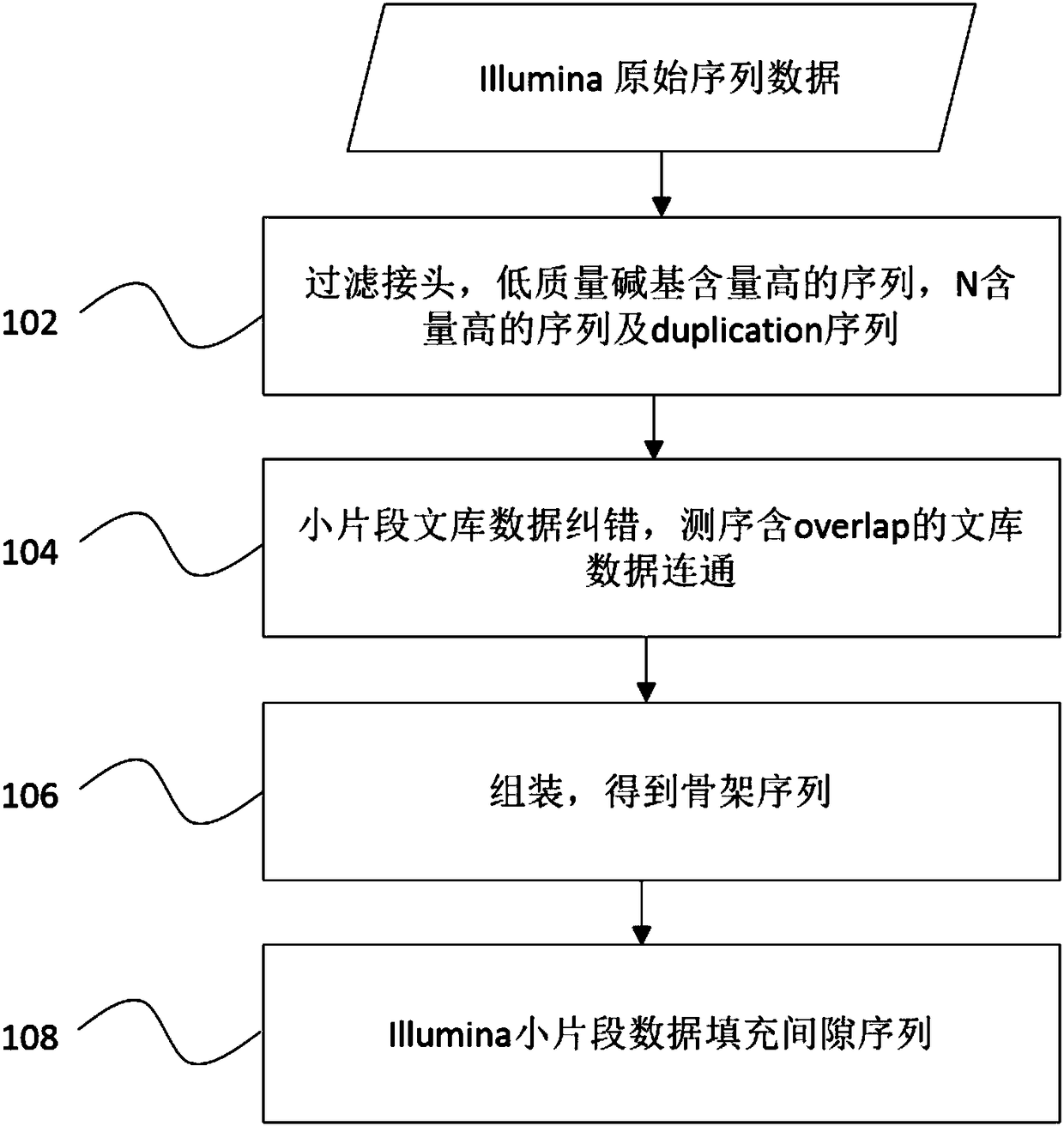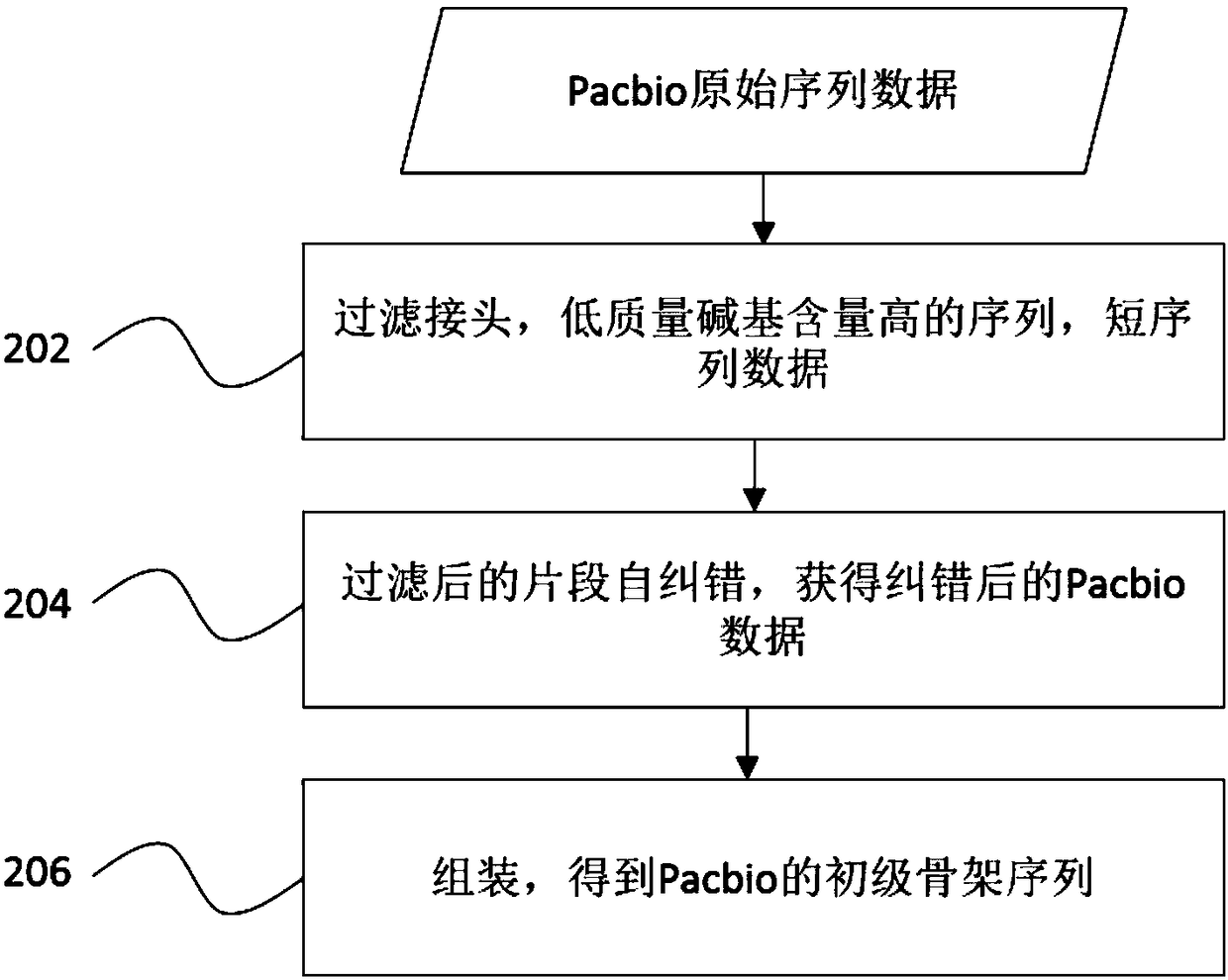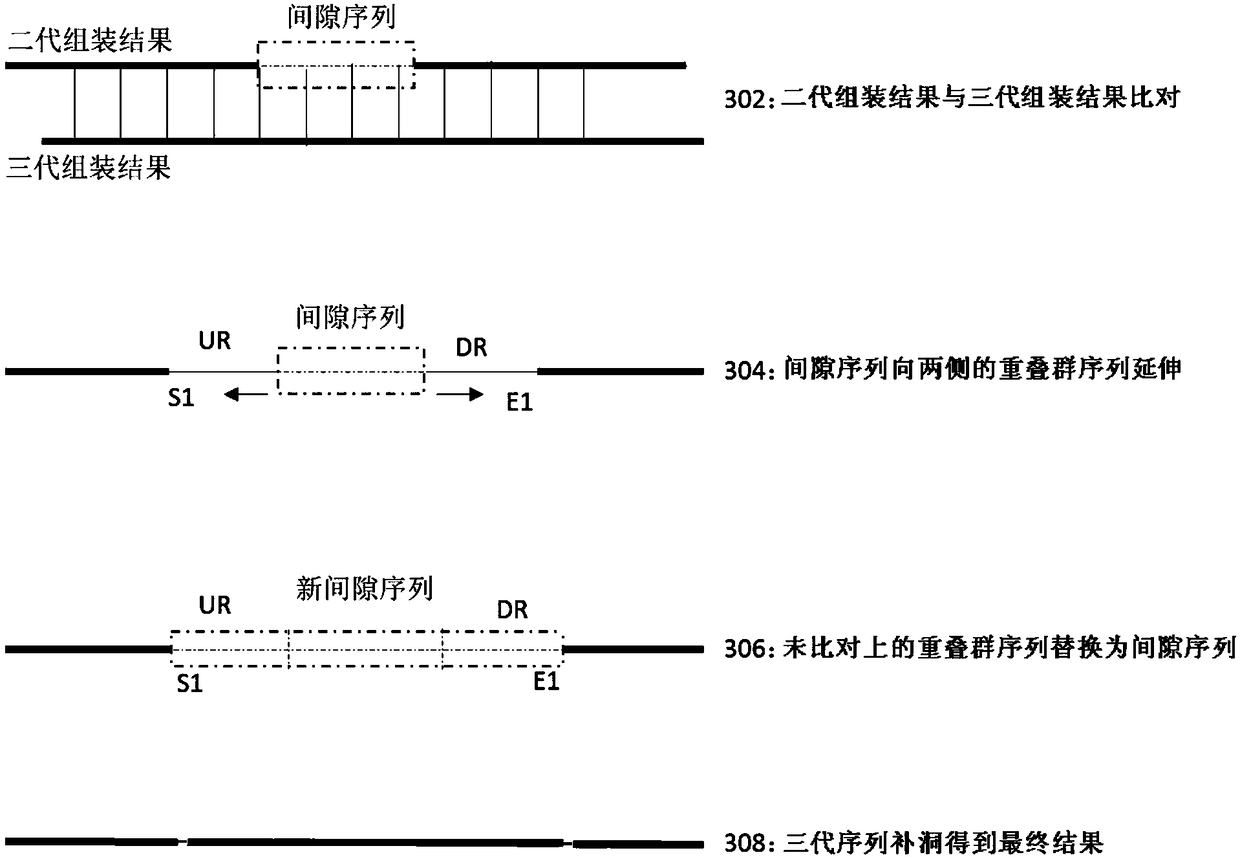Method and devices of using third-generation sequence to optimize second-generation assembly result
A sequence, three-generation technology, applied in the field of using the third-generation sequence to optimize the second-generation assembly results, can solve problems such as high sample requirements, high single-base error rate, and third-generation data limitations, and achieve the effect of improving accuracy and integrity.
- Summary
- Abstract
- Description
- Claims
- Application Information
AI Technical Summary
Problems solved by technology
Method used
Image
Examples
Embodiment Construction
[0040] The present invention will be further described in detail below through specific embodiments in conjunction with the accompanying drawings.
[0041] The second-generation sequence in the present invention can come from any next-generation sequencing platform. Existing technical platforms mainly include Roche / 454FLX, Illumina / Solexa Genome Analyzer and Applied Biosystems SOLID system, etc., preferably from the Illumina sequencing platform. The third-generation sequence comes from the Pacbio sequencing platform in the third-generation single-molecule real-time sequencing technology (SMRT).
[0042] In one embodiment of the present invention, an assembly sequencing solution based on the combination of the second-generation Illumina sequencing technology and the third-generation Pacbio sequencing technology is provided, with the purpose of solving the assembly problems of insufficiently high assembly indexes and low assembly accuracy of complex genomes.
[0043] The method ...
PUM
 Login to View More
Login to View More Abstract
Description
Claims
Application Information
 Login to View More
Login to View More - R&D
- Intellectual Property
- Life Sciences
- Materials
- Tech Scout
- Unparalleled Data Quality
- Higher Quality Content
- 60% Fewer Hallucinations
Browse by: Latest US Patents, China's latest patents, Technical Efficacy Thesaurus, Application Domain, Technology Topic, Popular Technical Reports.
© 2025 PatSnap. All rights reserved.Legal|Privacy policy|Modern Slavery Act Transparency Statement|Sitemap|About US| Contact US: help@patsnap.com



